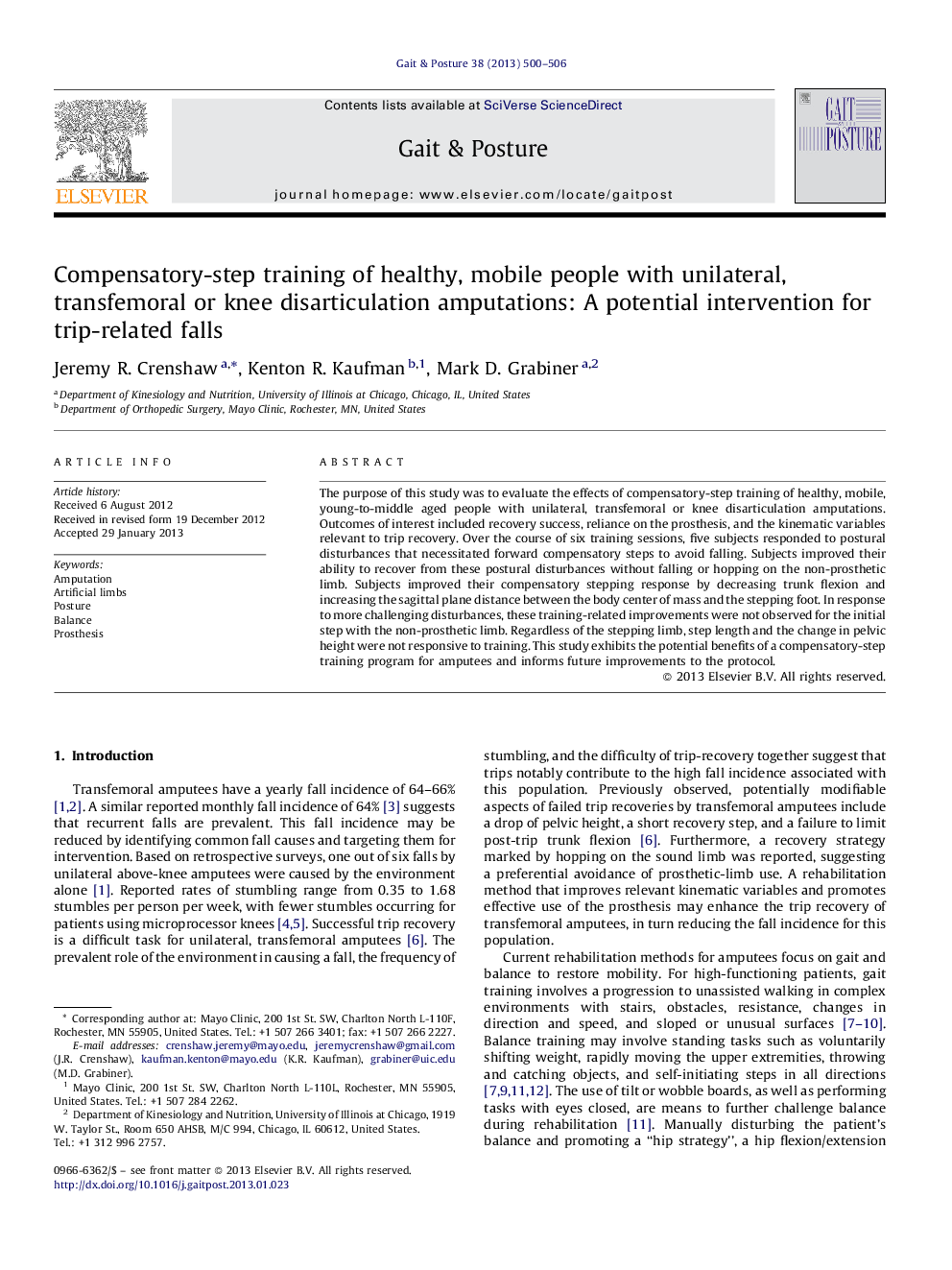| Article ID | Journal | Published Year | Pages | File Type |
|---|---|---|---|---|
| 6206643 | Gait & Posture | 2013 | 7 Pages |
The purpose of this study was to evaluate the effects of compensatory-step training of healthy, mobile, young-to-middle aged people with unilateral, transfemoral or knee disarticulation amputations. Outcomes of interest included recovery success, reliance on the prosthesis, and the kinematic variables relevant to trip recovery. Over the course of six training sessions, five subjects responded to postural disturbances that necessitated forward compensatory steps to avoid falling. Subjects improved their ability to recover from these postural disturbances without falling or hopping on the non-prosthetic limb. Subjects improved their compensatory stepping response by decreasing trunk flexion and increasing the sagittal plane distance between the body center of mass and the stepping foot. In response to more challenging disturbances, these training-related improvements were not observed for the initial step with the non-prosthetic limb. Regardless of the stepping limb, step length and the change in pelvic height were not responsive to training. This study exhibits the potential benefits of a compensatory-step training program for amputees and informs future improvements to the protocol.
⺠People with unilateral, transfemoral amputations underwent compensatory-step training. ⺠Subjects improved their recovery success and reliance on their prosthesis. ⺠Subjects decreased trunk flexion and increased the distance from the body COM to the stepping foot.
